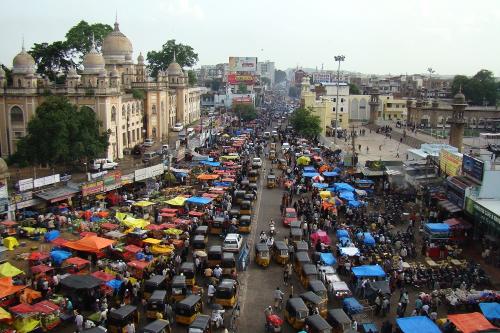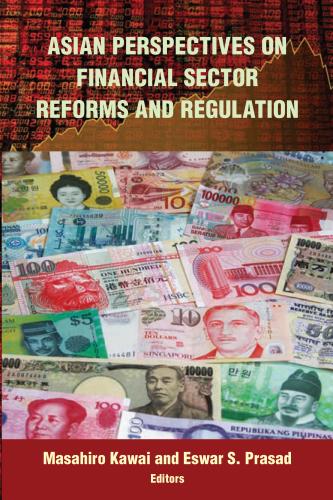Content from the Brookings Institution India Center is now archived. After seven years of an impactful partnership, as of September 11, 2020, Brookings India is now the Centre for Social and Economic Progress, an independent public policy institution based in India.
There are numerous small announcements in finance minister Arun Jaitley’s budget that must be lauded comments Shamika Ravi
Most television channels track the stock market as the finance minister’s budget speech unfolds in Parliament. This is done to capture the announcement effects from the speech. Yet, it also reflects the gross mistake experts make in believing the Sensex to be reflective of the Indian economy. There is fundamental distinction between the economy, the financial markets and the Sensex. The movement of the stock market captures a very small subset of the Indian financial markets and an even smaller subset of the Indian economy. So first, it is important to correct the context within which the Union budget of the government of India must be analysed. The yo-yo in the markets today, is hopefully, better appreciated now as just that—yo-yo in the market.
Besides the much-needed stimulus for the infrastructure sector and the multiple impetus to the agriculture sector, there are numerous small announcements in finance minister Arun Jaitley’s budget that must be lauded. These are unlikely to gain headlines and yet these are the structural reforms that we have been demanding for years in India. I am glad that Aadhaar has been given statutory backing. This will mean that now many services can be routed through that platform leading to significant gains in efficiency of scale and scope in the economy. Banks have been recapitalized but this is not a massive bailout. It is just enough to ensure that there is definitely a move towards mergers and consolidation among the public sector banks (PSBs). This is much needed to maintain long-term discipline in the banking sector, which has the potential to drag down a large part of the economy.
The emphasis on roads is an excellent idea. We saw in the early 2000s that better connectivity is a cornerstone for evolution of modern societies, not just the local economies. It improves access to healthcare, access to markets and is essential for social and economic mobility. If done right, the plan to develop all the under-used or abandoned airports with the Airports Authority of India would also lead to significant improvements in connectivity. These are marginal steps required by governments to force trickle down—beyond metros to smaller towns.
Allocating crucial funds to gram panchayats and urban local bodies is another critical move that will have widespread benefits. Now, since there are serious variations in the capacity of such local bodies, in the very short run this will exacerbate those differences. Places that have capable local governance will flourish while places that don’t might see a worsening as there is more to pilfer. But this is the true spirit of decentralization, where long-term sustainable change can only be bottom up and brought about through citizens at the local level. In economics parlance, we call this incentive compatibility.
The move towards incentivising employment generation by the private sector is a good one. Instead of relying on the National Skill Development Corporation to train and place students through subsidised financing schemes, it is better to leave it to private employers to hire and train people. The best training is probably on the job and this will raise overall employability in the labour market.
While most will see nothing for women in this budget, I see two specific support. The first and most significant is the provision of cooking gas for below poverty line (BPL) families. Indoor pollution through smoke from cooking is a major killer in India and cultural practices have meant that these are mostly women and little children. If the government manages to fulfil its objective of providing LPG connection to 50 million BPL families, this will have a disproportionately beneficial impact on women. The other focus on women came from the Stand Up India scheme. This has the mandate to support women entrepreneurs through various inputs, including credit and training.
In the higher education sector, it was refreshing not to hear about plans to open more Indian Institutes of Technology and All India Institutes of Medical Sciences throughout the country. Those announced over the last one decade are still struggling to stand on feet due to severe shortage of quality faculty. So it was good to see the focus, instead, on community college-like entities for providing employable skills, an agency for financing higher education, digital repository of degrees and other information. All of these have the potential to raise efficiency of the job markets in India. What was missing was a serious attempt to support research and development within the higher education sector. But perhaps, that needs more than mere financial support and hence is beyond the scope of the Union finance ministry.
Within healthcare, the focus was limited to insurance coverage, access to drugs and some medical equipment. The problem in Indian healthcare, however, is so pervasive that, like higher education, this will require a rejig championed by the health ministry. There lies the problem of the chicken and the egg—between capacity and performance. It is time for the health ministry to dust off the Draft National Health Policy 2015, and put shoulder to the wheel, yet again with renewed vigour and drive.
On the whole, I was pleased with the budget. Partly because my expectations were low given the last two years, but largely because I believe the finance minister stuck to the fundamentals that matter for long-term growth and development.
This article first appeared in Mint on March 1, 2016.Like other products of the Brookings Institution India Center, this is intended to contribute to discussion and stimulate debate on important issues. The views are those of the author.
Shamika’s video interview with Bloomberg, “Bloomberg Budget Special“
The Brookings Institution is committed to quality, independence, and impact.
We are supported by a diverse array of funders. In line with our values and policies, each Brookings publication represents the sole views of its author(s).










Commentary
Op-edMarginal revolutions from Budget 2016
Mint
March 1, 2016